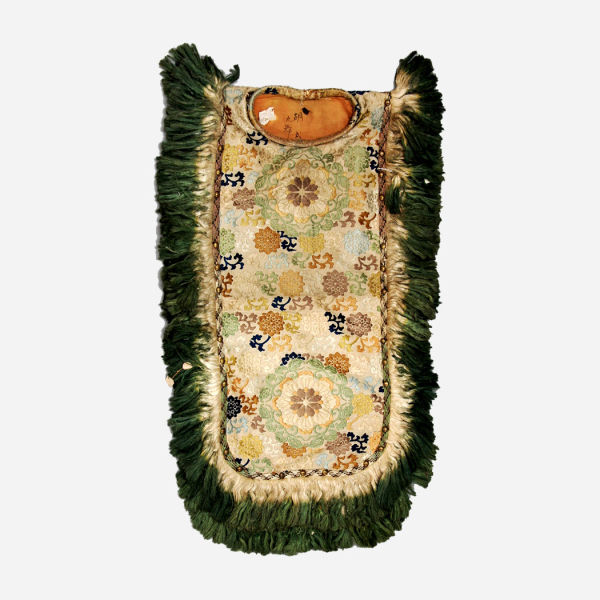Costumes of Bugaku Performances
-

Bugaku Costume (Ryōtō Chest Covering) with Flowers and Vines for Konju Dance
Edo period, 19th centuryJapanese Gallery (Honkan) Room 9
April 22, 2025 (Tue) - June 22, 2025 (Sun)A style of dance called bugaku was introduced from continental Asia to Japan in the late 700s. It evolved in Japanese imperial court and temples as a unique style of performance, so its costumes largely reflect the culture of the imperial court. There are various types of Bugaku performances, such as Dance of the Left, which originated in China and usually feature red costumes. In contrast, Dance of the Right, originated in Korea and typically feature blue costumes. This exhibition focuses on costumes with round motifs from Dance of the Left and Dance of the Right, featuring elegant colors and designs influenced by court culture.
| Designation | Name | Creation/ Excavation/ Provenance |
Period | Acquisition/ Ownership/ Accession Number |
CMT | ||
| Highlight | "Bugaku" Costume ("Hō") with Paired Mice in Roundels for "Komaboko" Dance | Edo period, 19th century | I-2396 | ||||
| Highlight | "Bugaku" Costume ("Ryōtō" Chest Covering) with Flowers and Vines for "Konju" Dance | Edo period, 19th century | I-2493 | ||||
| Highlight | "Bugaku" Costume ("Ryōtō" Chest Covering) with Cherry Blossoms and Wavy Stripes for "Bairo" Dance | Edo period, 19th century | I-2500 |
